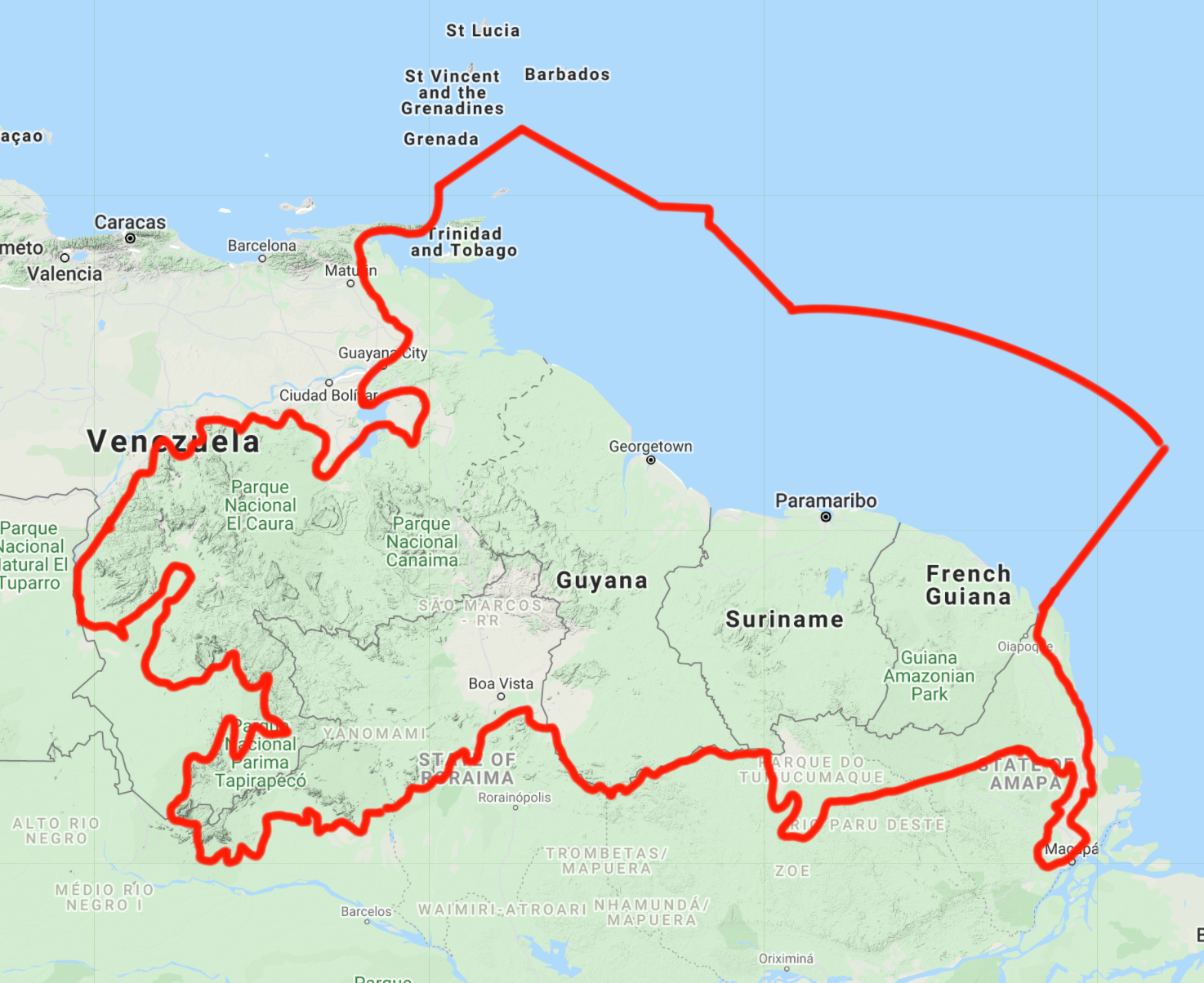Bird alive! What the devil is a harpy eagle?
Our “Species of the Week” series highlights the flagship species of each of the 844 unique ecoregions contained within Earth’s bioregions.
In the lush, tropical rainforests of Mexico, Central, and South America, there is a creature seemingly out of Greek and Roman mythology. Its legs are the size of human arms, with claws the size of grizzly bear paws, and a wingspan of up to 2.3 meters (7.4 ft). The harpy eagle is the most powerful and largest raptor in its range. Considered by many Brazilian Indigenous peoples as personifications of former chiefs, harpy eagles are at the top of their food chain and in doing so keep the jungle ecosystems they live in thriving.

Harpy eagles are the flagship species of the Guianan Piedmont Moist Forest ecoregion, located in the bioregion of Guianan Forests & Savanna (NT21).
Known in Brazil as the gavião-real or “royal-hawk,” harpy eagles have distinct gray and white plumage on their crowns that will stand upright when threatened. Females are larger than males, typically weighing 6 to 9 kilograms (13 to 20 lb) with a height like that of a small child, around 1.1 meters (3.6 ft). It is often cited as the largest eagle alongside the giant Philippine eagle which is somewhat longer on average but less in weight. Adding to their majestic size is their eyesight, which is eight times more powerful than that of humans.

Harpy eagle clutching a captured bird. Image credit: Creative Commons
With a top speed of 80 kilometers per hour (50 mph), harpy eagles are apex predators, diving down onto their prey and snatching it with outstretched feet. Hunting over territories that can exceed 10,000 acres, they capture a variety of sloths, monkeys, small birds, and reptiles like iguanas, lizards, and snakes. Harpy eagles are known as an umbrella species — they keep medium to small animal populations in check and this helps keep the entire rainforest healthy and in balance.
Harpy eagles mate for life and produce only one chick every three years. They stay devoted to their young for longer than many other species in the animal kingdom. After the chick leaves the nest at around six months of age, the parents will continue to feed it for up to ten months. Keeping to their formidable reputation, the birds build their nests in the tallest, most imposing tree in the rainforest, essentially creating a watchtower from which to preside over all the other “lesser citizens” of the jungle.
For many Indigenous groups, the harpy is Uiraçu himself, or the “father of all birds.” Garments made from their loose feathers found in the forest are only worn in significant celebrations and ceremonies. In pop culture, the harpy eagle was the inspiration for Fawkes the Phoenix in the Harry Potter film series.
Yet, despite their stature and status, rapid deforestation is destroying their habitat. In fact, the bird has already been eradicated from many areas where it formerly was found, especially in northern Central America. Conservation efforts, like the Indigenous-led in the Upper Amazon, not only protect the harpy eagle and its habitat but all the biodiversity that calls this region home.
Interested in learning more about the bioregions of Southern America? Use One Earth's interactive Navigator to explore bioregions around the world.
Launch Bioregion Navigator


